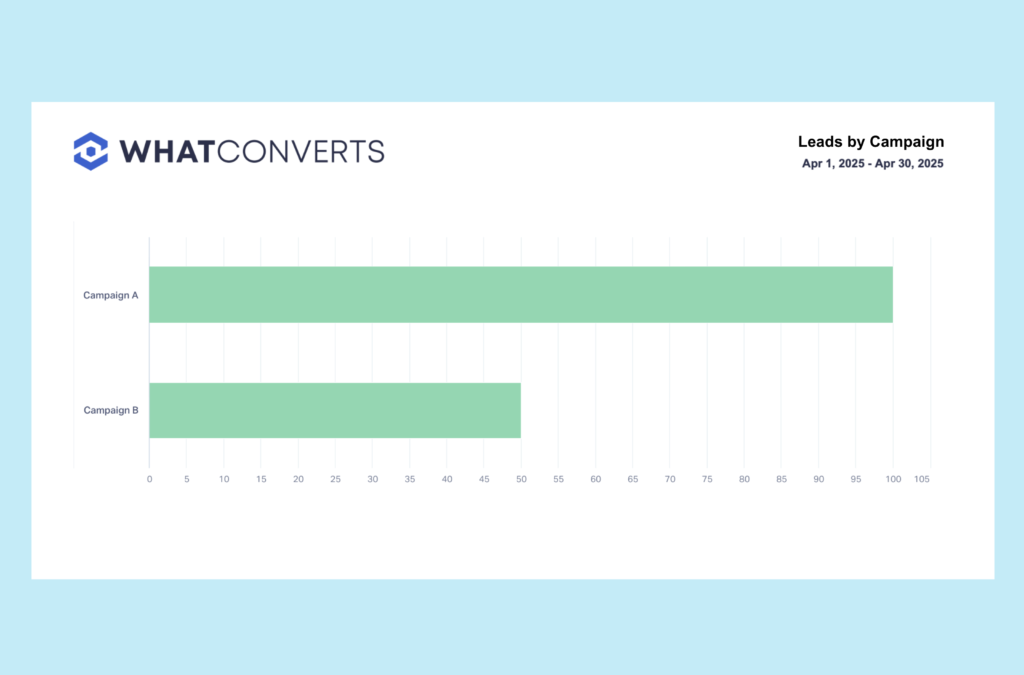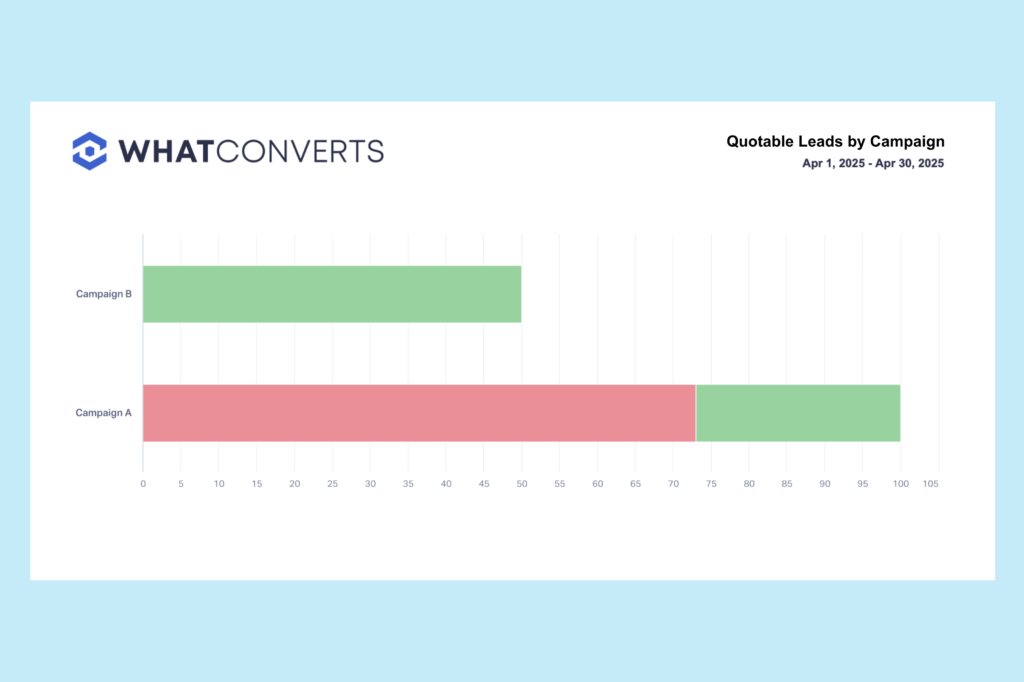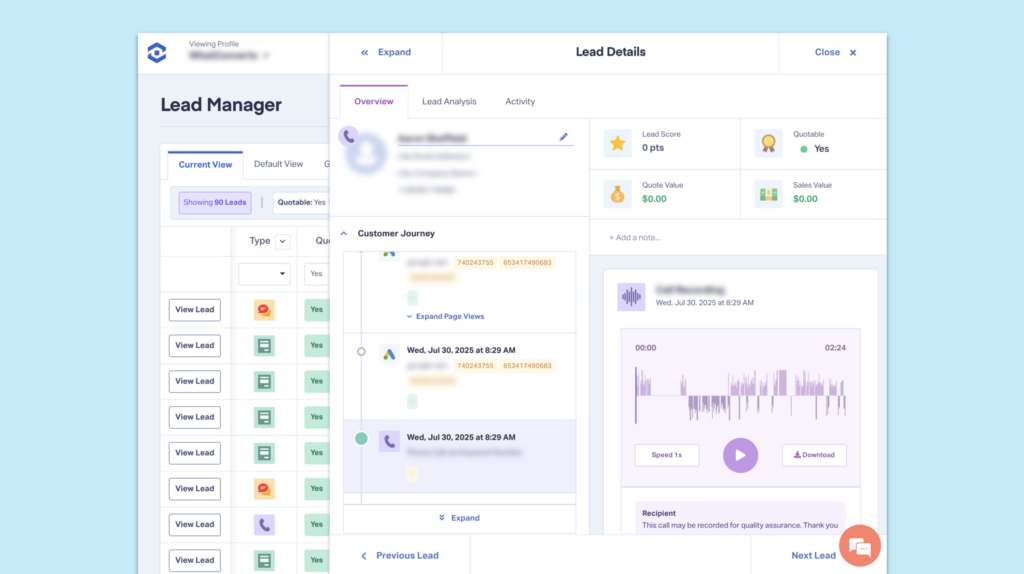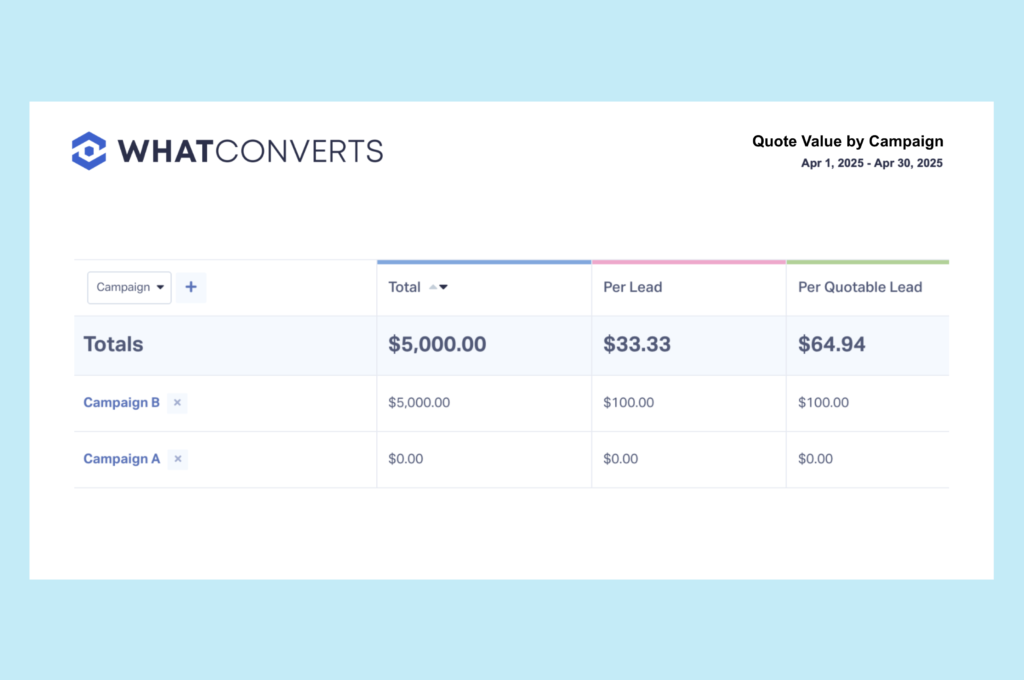
There’s nothing worse for a marketer than knowing your campaigns are crushing it, only to go unrecognized because the company or client aren’t making sales. It doesn’t matter how much traffic you drive or conversions you generate; if the company’s not making money, your stakeholders aren’t happy.
The problem isn’t your marketing—it’s your alignment. From your perspective, your PPC machine is thriving; from the sales team’s point of view, it’s filling their pipeline with nothing but duds.
When marketing and sales have different definitions of success, the lead funnel falls apart—and you keep burning budget on junk leads.
The solution isn’t more meetings or better communication. It’s creating a shared, measurable tracking system that connects every lead to both its marketing source and its sales outcomes. When marketing can see exactly which ads, keywords, and campaigns generate paying customers—not just casual clicks and calls—alignment happens naturally because both teams start optimizing for the same thing: revenue.
What Is Sales and Marketing Alignment?
Sales and marketing alignment is about making sure that both teams work toward shared goals, using the same metrics, and targeting the same leads throughout the customer journey.
When sales and marketing are aligned, marketing doesn’t just generate leads and hand them off to sales. Instead, marketing tracks their generated leads all the way through to the sales outcome, gathering essential data about which of their campaigns generated real sales-qualified prospects.
Both teams share responsibility for revenue generation, with marketing measured not just on lead volume but on lead quality and customer value.
The Cost of Misalignment in PPC Marketing
Misaligned marketing and sales teams don't just create internal friction—they waste advertising dollars and miss revenue opportunities.
The problem starts with measurement. Marketing teams optimize for conversions they can track: calls, form submissions, and clicks. But these metrics don’t predict actual sales or revenue, meaning that ad spend is wasted chasing conversions from people who were never planning to buy.
An Example of Costly Misalignment
Consider two campaigns for a home security company. Campaign A generates 100 calls at $50 per call, while Campaign B generates 50 calls at $200 per call. Based on traditional metrics, Campaign A looks like the winner.
But what if Campaign A’s calls are mostly price shoppers, while Campaign B’s calls are ready-to-buy homeowners? The “losing” campaign is actually generating far more revenue.
Since you’re not tracking leads, you have no data on the actual outcomes of those conversions. As a result, marketing increases their budget to Campaign A under the mistaken assumption that this will increase their number of “qualified” leads. They unknowingly double their wasted ad spend, all while flooding sales with even more time-wasters and burying those valuable Campaign B leads in a haystack.
And since sales gets no information as to which leads are worth pursuing, they invest time and resources following up with people who have no shot of actually making a purchase, while those who would have become valuable customers are left to be scooped up by a more responsive competitor.
Why Sales and Marketing Are So Often Misaligned
According to Influ2’s State of Sales and Marketing Alignment Report, 53% of companies have a broken lead handoff process. When sales and marketing alignment is so critical, why is it that so many companies have failed to close the gap?
Differing Definitions of “Qualified”
A team can only measure its success with the metrics it has available. For marketing teams, that’s often click-throughs and conversion actions. Compared to traffic from generic organic searches, leads that click on a PPC ad and successfully complete a conversion action are considered qualified.
But sales teams measure their success in a more concrete way: closed deals and revenue generated. A lead is only qualified if they’re planning on making a purchase. Leads that click ads and complete conversions but aren’t serious about moving forward are time-wasters—but since standard marketing data doesn’t allow marketers to “see” which leads they generate have buying intent, they can’t evaluate lead quality as concretely as sales can.
Missing and Siloed Data
Any campaign that generates conversions is considered successful in marketing’s book, because they can’t see which campaigns are generating conversions that become customers and which are generating conversions that go nowhere. Without tracking, marketers are left guessing with post-sale surveys that are unreliable and incomplete.
The only way to eliminate marketing’s blind spot is to break down the walls that separate conversion data from sales data and connect PPC spend directly to revenue. And the only way to do that is by implementing comprehensive, full-funnel lead tracking.
How WhatConverts Bridges the Lead Handoff Gap
The key to solving the alignment problem lies in comprehensive lead tracking that:
- Connects every prospect back to their original marketing source
- Follows them through to their final sales outcome
WhatConverts addresses this challenge by creating individual lead profiles that capture the complete customer journey rather than anonymous conversion events.
Step 1: Lead and Conversion Capture
The first step is to set up call tracking (using Dynamic Number Insertion) and form tracking and connect it to your Google Ads platform. WhatConverts uses a first-party tracking script to document each lead and build a detailed profile that includes not just each conversion action, but the specific ad, keyword, campaign, and landing page that brought them to your business.
More importantly, it continues tracking that prospect through every subsequent interaction—phone calls, form submissions, email exchanges, and sales outcomes—so all of that data remains stored alongside the original conversion data for that lead.
Step 2: Lead Qualification
As each lead comes in with conversion data attached, teams can evaluate them individually and qualify them based on key points, like whether they’re in your client’s service area or how long their call lasted. (You can also use Lead Intelligence rules to automate this process, so leads are marked as “quotable” or “not quotable” as soon as they enter your database.)
For example, in our home security scenario, we could tell WhatConverts to mark leads as “not quotable” if:
- They call from outside the company’s geographic service area
- They hang up immediately or leave no voicemail
- They leave key form fields blank
- They mention certain anti-buying signals during their call, like “just comparing prices” or “not planning to make a choice until next year”
Meanwhile, we could have WhatConverts mark leads as qualified if they:
- Have a call lasting longer than 30 seconds
- Mention the specific service they’re interested in
- Mention clear buying signals like “looking to schedule a consultation” “get this installed by end of month” etc.
By filtering out disqualified prospects, marketers can build a lead database made up entirely of hot, qualified prospects—and in doing so, prove they’re generating high-quality leads that convert.
Step 3: Lead Valuation
Lead qualification filters out bad leads, but with WhatConverts you can also take this a step further to separate good leads into those that are more or less valuable. When one campaign brings in fewer leads but those leads sign much more expensive contracts, only a value-based lead report can show you which marketing efforts are contributing more to your client’s bottom line.
WhatConverts’s “Quote Value by Campaign” report lets you measure your marketing efforts in terms of cold, hard cash—so you can see exactly where to double down and increase your ad budget to further accelerate marketing revenue.
Step 4: Ad Optimization
After you’ve been collecting this comprehensive data for a few weeks, you’ll likely begin to see patterns across different ad campaigns. Certain ads might consistently bring in large, qualified prospects with high-value job requests, while others tend to generate price-shoppers and other casual browsers.
Once you see that some campaigns don’t generate paying customers, you don’t want to continue wasting ad budget on those unqualified clicks. Instead, you’ll want to halt those campaigns and reinvest that budget in those that are bringing in real revenue.
WhatConverts allows you to do this automatically by feeding qualified lead data back to Google Ads and training its bidding algorithm to target keywords that bring in more of those qualified conversions. The more you qualify and value your leads, the smarter your Google Ads algorithm will get, and the higher your lead quality will be.
Building Alignment That Drives Results
Sales and marketing isn’t a nice-to-have; it’s essential to building marketing campaigns that actually accomplish business objectives. When both teams work from the same data and optimize for the same outcomes, the results speak for themselves: higher conversion rates, higher close rates, more efficient ad spend, and accelerated revenue growth.
Ready to start collecting the data you need to align your marketing with your client’s business goals? Sign up for your free 14-day WhatConverts trial today.
Get a FREE presentation of WhatConverts
One of our marketing experts will give you a full presentation of how WhatConverts can help you grow your business.
Schedule a Demo
Grow your business with WhatConverts









